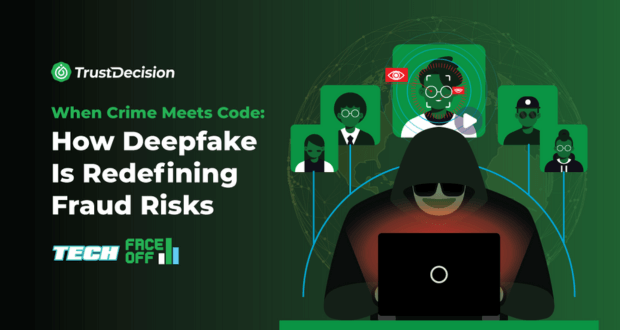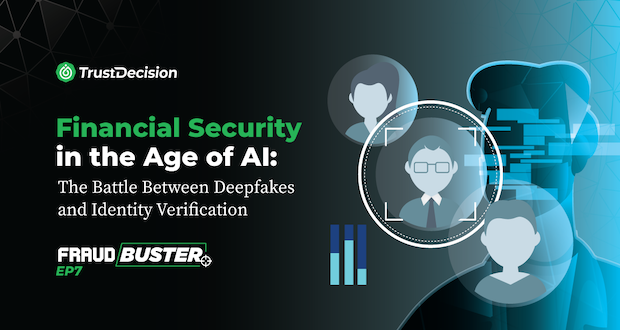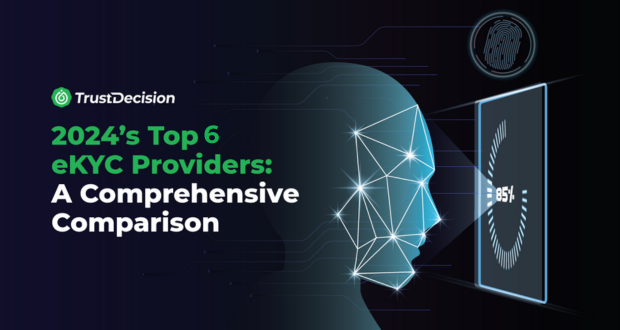Introduction
In our rapidly digitizing world, digital identity verification plays a pivotal role. Whether it’s opening a bank account, making an online purchase, or accessing government services, verifying identities is essential. Meanwhile, the disruptive force of Artificial Intelligence-Generated Content (AIGC) introduces new challenges for identity verification. This article delves into the impact of AIGC and the emerging challenges faced in ensuring robust digital identity verification under AI disruption and explores the adaptive solutions.
Understanding Digital Identity Verification
Definition of Digital Identity Verification
Digital identity verification is the process that confirms an individual’s authenticity in the digital realm. It ensures that those accessing services, conducting transactions, or engaging in various activities are genuinely who they claim to be.
Importance of Digital Identity Verification Service
Digital identity verification holds immense significance for both individuals and organizations:
- For Individuals:
- Privacy and Security: It safeguards personal identifiable information, mitigating risks of identity theft and misuse.
- Trust and Confidence: Individuals can confidently engage in online activities, knowing their identities are protected.
- Convenience: Remote verification processes enable faster and hassle-free interactions.
- For Organizations:
- Fraud Prevention: Robust identity verification protocols prevent fraudulent activities, reducing financial losses.
- Customer Trust: Upholding trust is crucial for customer retention and brand reputation.
- Compliance: Meeting regulatory requirements, such as Know Your Customer (KYC) regulations, ensures legal adherence.
Impact of Digital Identity Verification
As our interconnected world evolves, identity verification plays a pivotal role in preventing:
- Identity Theft: Unauthorized use of personal information.
- Fraudulent Activities: Illicit transactions and deceptive practices.
- Unauthorized Data Access: Protecting sensitive data from unauthorized parties.
Digital identity verification enables faster, more secure, and remote verification processes, overcoming the limitations of manual checks and physical document verification. It empowers organizations to build trust, enhance security, and streamline user experiences in our interconnected world.
The Various Types of Identity Verification
Knowledge-Based Identity Verification (KBA)
Knowledge-Based Identity Verification relies on personal information that only the individual should know. It involves asking specific questions related to their history, such as previous addresses, family members, or financial transactions. While KBA has been widely used, it faces challenges due to the availability of personal information online and the risk of social engineering attacks.
Two/Multi-Factor Authentication Verification
Two/Multi-Factor Authentication (2FA/MFA) combines multiple verification methods for added security. It typically involves something the user knows (password), something they have (a mobile device or hardware token), or something they are (biometrics). By requiring two or more factors, organizations enhance security beyond traditional password-based authentication.
Database-First Identity Verification
Database-First Identity Verification relies on cross-referencing user information with trusted databases. It validates data against authoritative sources, such as government records, credit bureaus, or other reliable repositories. This approach ensures accuracy and reduces reliance on user-provided information, enhancing the overall verification process.
AIGC Disruption: The Challenges
Introduction to AIGC Disruption
Artificial Intelligence-Generated Content (AIGC) represents a transformative leap in information technology. By harnessing advanced AI technologies, AIGC can effortlessly generate high-quality data, including images, videos, text, audio, and graphics. This creative prowess unlocks unprecedented efficiency and creativity, often surpassing what professionally generated content (PGC) and user-generated content (UGC) can achieve. As AIGC evolves, it reshapes industries, particularly in the convergence of digital and physical realms, such as the Metaverse.
Challenges Posed by AIGC Disruption
While AIGC offers immense potential, it also introduces security and privacy challenges. Let’s explore some of the key hurdles:
- Privacy Leakages: The proliferation of generative data across cyberspace raises concerns about privacy. Individuals’ personal information may inadvertently leak through AIGC-generated content, leading to identity exposure and misuse.
- Media Forgery: AIGC’s ability to create realistic content blurs the line between genuine and fabricated data. Media forgery, including deepfakes, poses risks for misinformation, fraud, and reputational damage.
- Trustworthiness: As AIGC-generated content becomes indistinguishable from real data, ensuring trustworthiness becomes critical. How can we verify the authenticity of content when AIGC can produce convincing fakes?
- Compliance and Regulation: Existing regulations struggle to keep pace with AIGC advancements. Ensuring compliance and addressing legal implications remain challenging.
- Controllability: Balancing AIGC’s creative freedom with control mechanisms is essential. How can we guide AIGC to produce desired outcomes without compromising security?
Trends and Technologies
While we have explored the various types of Identity Verification in the previous section, it is crucial to understand that the realm of Identity Verification is not static and is heavily shaped by emerging trends and technologies in the digital space. As we witness constant technological innovations and advancements in the cyber environment, new approaches to identity verification emerge to provide robust and secure methodologies for user identification and authentication.
Biometric Verification
Biometric verification is a cutting-edge approach to digital identity verification that leverages unique biological traits for accurate identification. Let’s delve deeper into this critical trend:
- Biometric Modalities:
- Fingerprint Recognition: Analyzing the unique patterns on an individual’s fingertips.
- Facial Recognition: Mapping facial features and comparing them against stored templates.
- Iris Scanning: Examining the intricate patterns in the iris for precise identification.
- Voice Recognition: Analyzing vocal characteristics, pitch, and speech patterns.
- Behavioral Biometrics: Assessing user behavior, such as typing speed, mouse movements, and touchscreen gestures.
- Challenges and Advancements:
- Spoofing Prevention: Biometric systems must guard against spoofing attempts using high-resolution photos, 3D masks, or voice recordings.
- Liveness Detection: Ensuring that the biometric sample is from a live person (e.g., blinking during facial recognition).
- Multimodal Fusion: Combining multiple biometric modalities for enhanced accuracy.
- Privacy Concerns: Balancing security with privacy rights and data protection regulations.
Blockchain-Based Identity Verification
Blockchain technology offers unparalleled security and transparency for identity verification:
- Decentralization: Storing identity data across a distributed network prevents single points of failure.
- Immutable Records: Once recorded on the blockchain, identity data cannot be altered or deleted.
- Self-Sovereign Identity (SSI): Users control their identity data, granting or revoking access as needed.
- Smart Contracts: Automating identity verification processes while maintaining privacy.
Online Identity Verification Methods
Online methods continue to evolve, ensuring secure and seamless verification experiences:
- Document Verification:
- OCR (Optical Character Recognition): Extracting information from identity documents.
- Hologram Detection: Verifying the presence of security features like holograms.
- Document Authentication: Cross-referencing against trusted databases.
- Biometric Scans:
- Mobile Biometrics: Leveraging smartphone sensors for fingerprint or facial scans.
- Remote Liveness Detection: Ensuring the user is physically present during verification.
- Real-Time Checks:
- Database Queries: Instantly validating user information against authoritative sources.
- Watchlists and Sanctions Lists: Screening for potential risks.
Industry Applications
Retail and E-Commerce
In the retail and e-commerce landscape, digital identity verification plays a crucial role. Here’s how:
- User Onboarding: Seamless and secure customer onboarding is essential for e-commerce platforms. Digital identity verification ensures that new users are genuine, preventing fraudulent accounts and enhancing trust.
- Fraud Prevention: Retailers face risks such as account takeovers, fake reviews, and payment fraud. Robust identity verification helps detect and prevent these fraudulent activities.
- Personalization: Accurate identity verification enables personalized shopping experiences. Retailers can tailor recommendations, discounts, and promotions based on verified user profiles.
Financial Services
Financial institutions rely heavily on identity verification for regulatory compliance and risk management:
- Know Your Customer (KYC): Banks, credit unions, and fintech companies use digital identity verification to comply with KYC regulations. Verifying customer identities prevents money laundering and ensures legal adherence.
- Loan Applications: Identity verification is crucial during loan applications. It helps assess creditworthiness and prevents fraudulent loan requests.
- Secure Transactions: Digital identity verification adds an extra layer of security to online banking, wire transfers, and other financial transactions.
Government Services
Government agencies leverage digital identity verification for various services:
- Passports and Visas: Verifying identities is essential for issuing passports, visas, and travel documents. It ensures border security and prevents identity fraud.
- Social Services: Identity verification is crucial for distributing benefits, welfare, and healthcare services. Accurate verification prevents misuse and ensures assistance reaches eligible recipients.
- Voting and Elections: Secure digital identity verification can enhance the integrity of voting systems, preventing voter impersonation and ensuring fair elections.
Conclusion
In our interconnected world, digital identity verification has become a necessity rather than a luxury. From fraud prevention to the creation of personalized experiences, identity verification holds a significant impact on individuals, businesses, and society at large. However, the advent of Artificial Intelligence-Generated Content(AIGC), although disruptive, presents unique challenges and opportunities in this equation. As technology continues to evolve, the future of digital identity verification is promising yet full of trials. To ensure robust and reliable digital interactions, organizations need to continually innovate, adapt, and prioritize trust, especially in the face of AIGC's game-changing disruptions.









.jpeg)




